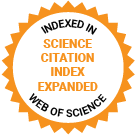Journal of Medical Internet Research
The leading peer-reviewed journal for digital medicine and health and health care in the internet age.
Editor-in-Chief:
Gunther Eysenbach, MD, MPH, FACMI, Founding Editor and Publisher; Adjunct Professor, School of Health Information Science, University of Victoria, Canada
Impact Factor 5.8 CiteScore 14.4
Recent Articles

With the increasing interest in the application of large language models (LLMs) in the medical field, the feasibility of its potential use as a standardized patient in medical assessment is rarely evaluated. Specifically, we delved into the potential of using ChatGPT, a representative LLM, in transforming medical education by serving as a cost-effective alternative to standardized patients, specifically for history-taking tasks.

An increase in the prevalence of neurodevelopmental conditions worldwide, alongside resource constraints within clinical services, has led to increased interest in health information technologies, such as apps and digital resources. Digital tools are often viewed as a solution to bridge this divide and to increase supports for families. There is, however, a paucity of research that has evaluated digital health tools, their potential benefits for child neurodevelopment and associated concerns (eg, mental health, well-being), and their benefit for families.

Hospitals use triage systems to prioritize the needs of patients within available resources. Misclassification of a patient can lead to either adverse outcomes in a patient who did not receive appropriate care in the case of undertriage or a waste of hospital resources in the case of overtriage. Recent advances in machine learning algorithms allow for the quantification of variables important to under- and overtriage.



Obesity could compromise people’s health and elevate the risk of numerous severe chronic conditions and premature mortality. Young adults are at high risk of adopting unhealthy lifestyles related to overweight and obesity, as they are at a phase marked by several significant life milestones that have been linked to weight gain. They gain weight rapidly and excess adiposity mostly accrues, compared with middle-aged and older adults when weight stabilizes or even decreases. Virtual reality exergames have the potential to increase physical activity in people’s daily lives. However, the factors that influence young adults’ preference for using virtual reality exergames for weight control remain unclear.

Access to clear and comprehensible health information is crucial for patient empowerment, leading to improved self-care, adherence to treatment plans, and overall health outcomes. Traditional methods of information delivery, such as written documents and oral communication, often result in poor memorization and comprehension. Recent innovations, such as animation videos, have shown promise in enhancing patient understanding, but comprehensive investigations into their effectiveness across various health care settings are lacking.

The prevalence of overweight and obesity is increasing at an alarming rate in children and adolescents worldwide. Given the dimensions of the problem, the treatment of childhood obesity is considered extremely important. Current evidence indicates that behavioral and cognitive behavioral strategies combined with diet and physical activity approaches may assist in reducing adolescent obesity.


Artificial intelligence (AI) applied to real-world data (RWD; eg, electronic health care records) has been identified as a potentially promising technical paradigm for the pharmacovigilance field. There are several instances of AI approaches applied to RWD; however, most studies focus on unstructured RWD (conducting natural language processing on various data sources, eg, clinical notes, social media, and blogs). Hence, it is essential to investigate how AI is currently applied to structured RWD in pharmacovigilance and how new approaches could enrich the existing methodology.

Care transitions are complex and can make patients vulnerable to adverse events. Poor communication among clinicians, patients, and their caregivers is a critical gap during these periods of transition. Technology solutions such as platform-based patient-clinician digital health interventions (DHIs) can provide support and education to patients.

Advanced technologies are becoming increasingly accessible in rehabilitation. Current research suggests technology can increase therapy dosage, provide multisensory feedback, and reduce manual handling for clinicians. While more high-quality evidence regarding the effectiveness of rehabilitation technologies is needed, understanding of how to effectively integrate technology into clinical practice is also limited. Current implementation of rehabilitation technology is inconsistent, with low uptake among clinicians and frequent reports of technology abandonment. An Australian rehabilitation provider opened a new technology therapy center in 2022, offering a unique opportunity to generate practice-based evidence to inform future technology implementation and research.
Preprints Open for Peer-Review
Open Peer Review Period:
-
Open Peer Review Period:
-
Open Peer Review Period:
-
Open Peer Review Period:
-

















